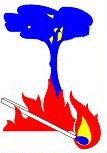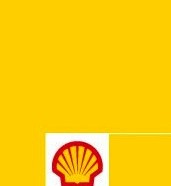Caution : fire risk !
Robin des Bois and GEIDE post-disaster
 Nobody can be blamed for the outbreak and consequences of earthquakes of large magnitude. For forest fires, it’s a different story. Only the lightning escapes human responsibility. Man is the cause of more than 9 out of 10 forest fires.
Nobody can be blamed for the outbreak and consequences of earthquakes of large magnitude. For forest fires, it’s a different story. Only the lightning escapes human responsibility. Man is the cause of more than 9 out of 10 forest fires.
Barbecues, gas stoves, cigarettes, motorcycle incursions, quadbikes or other vehicles with internal combustion engines, campfires, fireworks and combustible wastes are all risks of fire in an environment that is vulnerable to conflagration. A spark can ignite thousands of acres and a small fire can in a few seconds become uncontrollable.
Caution : fire risk !
Robin des Bois and GEIDE post-disaster
 Nobody can be blamed for the outbreak and consequences of earthquakes of large magnitude. For forest fires, it’s a different story. Only the lightning escapes human responsibility. Man is the cause of more than 9 out of 10 forest fires.
Nobody can be blamed for the outbreak and consequences of earthquakes of large magnitude. For forest fires, it’s a different story. Only the lightning escapes human responsibility. Man is the cause of more than 9 out of 10 forest fires.
Barbecues, gas stoves, cigarettes, motorcycle incursions, quadbikes or other vehicles with internal combustion engines, campfires, fireworks and combustible wastes are all risks of fire in an environment that is vulnerable to conflagration. A spark can ignite thousands of acres and a small fire can in a few seconds become uncontrollable.
Let’s go
Shell of French Guiana
Release # 3 – Volume 2
Go Fast!
1 – On May 29, 2001, Christian Pierret, Secretary of State for Industry in Lionel Jospin’s government has granted Planet Oil Limited a permission for offshore drilling in French Maritime Guiana.
2 – On July 2nd, 2007, the license originally assigned to Planet Oil Limited was extended and given to Hardman Petroleum France by Jean-Louis Borloo, Minister of Ecology in François Fillon’s government.
3 –The operation was framed by two prefectoral decrees on January and March 2011 respectively. Then, from March to November, 2011: the primary exploratory drilling was accomplished. A peculiar situation : the prefect of French Guiana issued two security measures for evacuation of drilling platform when Kourou Space Center launched its first satellite because of the fear of a possible fallout on the drilling region.









